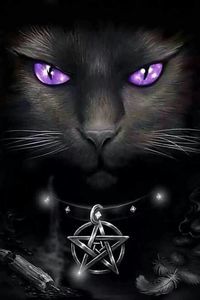9403980
Atomic structure and the periodic table
Beschreibung
Mindmap von Brodie McMeowface, aktualisiert more than 1 year ago
Mehr
Weniger

|
Erstellt von Brodie McMeowface
vor mehr als 8 Jahre
|
|
Zusammenfassung der Ressource
Atomic structure and
the periodic table
- Atoms
- The Nucleus
- Protons
- Determines what element it is
- Positive charge
- Determines what element it is
- Neutrons
- Determines what isotope it is
- neutral charge
- Determines what isotope it is
- Protons
- Electrons
- Move in shells
- Determines the period of the element
- First shell: 2, second: 8, third:8
- Determines the period of the element
- Determines what ion it is
- More means negative charge
- Less means positive charge
- More means negative charge
- negative charge
- Move in shells
- Neutral and have no
charge normally
- Protons = electrons
- Protons = electrons
- Protons + neutrons =
approximate mass number
- The Nucleus
- Elements
- Contain molecules
with one type of atom
- 118 currently known with
more predicted to be possible
- Represented by symbols
- Contain molecules
with one type of atom
- Compounds
- Made of two or more types of atoms
- Chemically linked through bonds
- Covalent
- Ionic
- Metallic
- Covalent
- Properties can be totally different
from the properties of their elements
- Made of two or more types of atoms
- Mixtures
- Made of two or more types
of atoms or compounds
- But they are not chemically linked
- Properties are normally a mix of
the properties of their components
- Can be separated without a chemical reaction
- Made of two or more types
of atoms or compounds
- Periodic table
- Groups
- 0-7 and transition metals
- Group 1: alkaline metals
- Very reactve
- More reactive down the group as the
electron is further from the nucleus
- 1 electron in the outer shell
- soft metals
- Low density
- Very reactve
- Group 7: Halogens
- Less reactive as you go down because the
outer shell is further away from the nucleus
- Very reactive
- Colored vapors
- Further down, higher
melting points
- Less reactive as you go down because the
outer shell is further away from the nucleus
- Group 0: noble gasses
- Inert
- outer shell always has 8 electrons
- Further down, higher
melting points
- Inert
- Group 1: alkaline metals
- 0-7 and transition metals
- Periods
- Currently 7
- Currently 7
- Groups
- Separating mixtures
- Chromatography
- Separating mixtures into their
components by allowing one to
move and one to stay stationary
- Paper chromatography separates inks
- Separating mixtures into their
components by allowing one to
move and one to stay stationary
- Filtration and crystallisation
- Distillation and
fractional distillation
- Chromatography
Medienanhänge
Möchten Sie kostenlos Ihre eigenen Mindmaps mit GoConqr erstellen? Mehr erfahren.
